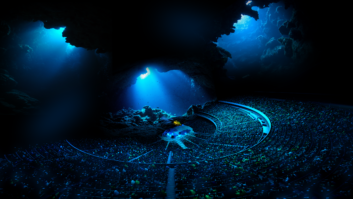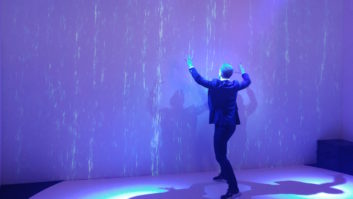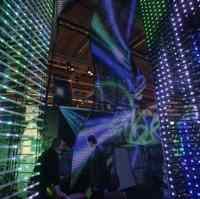 Two of the most disruptive evolutions in the installation industry in recent years have been the introduction of photorealistic CG imagery and the emergence of ever-larger and finer-pitch LED screens. Driven by developments in real-time game engines like Unreal Engine, designers can now create astonishingly detailed scenes, generated on the fly and indistinguishable from the real thing. What is more, they can be displayed on steadily larger and more flexible canvases, providing a genuinely game-changing technological and artistic leap over work that was being done just a handful of years ago.
Two of the most disruptive evolutions in the installation industry in recent years have been the introduction of photorealistic CG imagery and the emergence of ever-larger and finer-pitch LED screens. Driven by developments in real-time game engines like Unreal Engine, designers can now create astonishingly detailed scenes, generated on the fly and indistinguishable from the real thing. What is more, they can be displayed on steadily larger and more flexible canvases, providing a genuinely game-changing technological and artistic leap over work that was being done just a handful of years ago.
DETAILED IMAGES
The growth in rendering power we have seen in recent years has done much to make sure that the images we see nowadays, real-time or otherwise, are phenomenally detailed. However, even though individual computers are getting dramatically more powerful, the processing power needed to drive the most detailed images mean it can still be a struggle to keep frame rates high. This is a particular problem when driving large 4K images (and beyond) needed for larger screens.
This is where cluster rendering comes in. disguise has deployed it in its new r18 software release and the results are amazing, allowing anyone to create engaging and high-quality real-time content at scale, without compromising on render power. Designed specifically for rendering content of the highest quality, resolution, and framerate, cluster rendering delivers photorealistic scenes to large-scale content displays on any surface, from fixed installations to corporate displays.
The concept is fairly simple. Cluster rendering allows large projects to be split across multiple render nodes; this means each individual machine is only given what it can handle at any one time, often even with some processing headroom to ensure the delivered visuals are of the highest possible quality. The result is every pixel of the final image gets the attention it needs to be convincing on even the closest examination.
SMALLER SECTIONS
The key to this is the breaking down of each project into smaller sections that can be rendered simultaneously across multiple render nodes. In effect, different machines are responsible for different fragments of elements within the final images. For an installation at a new car launch, for instance, different areas or different components – the car, the sky, left picture, right picture, and so on – can be assigned to different servers for rendering. The way an image is divided is either user-definable or automatic and is completely scalable. Want more complex backdrops or scenery? Just add more render nodes.
Managing this is, of course, a complex issue and care needs to be taken on the software side of any implementations. One potential concern that cluster rendering presents is synchronisation between each cluster; a lack of colour synchronisation or latency issues between units could cause problems as it is important to be able to seamlessly line up imagery with no visible joins. However, advanced software engineering, such as with the state-of-the-art protocols in disguise r18, ensures that all of these issues can be automatically taken care of within the disguise workflow.
The result is that audiences can enjoy visually stunning scenes regardless of the scale of your installation. There is no longer any need to limit screen sizes due to a lack of processing power to drive them. And, what’s even better, is that the imagery powered by cluster rendering is only going to get better with further developments to our software!
EPIC ENGINE
disguise partnered with Epic Games to develop cluster rendering, integrating with the company’s market-leading Unreal Engine to power the scale out of the real-time graphics. The use of Unreal Engine has grown significantly in film, used to create photorealistic scenes in virtual production, where it can provide convincing LED backdrops rather than shooting against greenscreen. The same can be applied to virtual sets for television shows and, of course, fixed installations.
The near-linear scaling potential of cluster rendering in terms of complexity and resolution means that the full range of Unreal Engine rendering capability can be applied to any project, at any scale, and anywhere with decent connectivity. As Unreal Engine continues to develop to enable even more impressively photorealistic real-time images, and with the fidelity and flexibility of LED screens also improving all the time, the creative potential that can be realised in future installed projects is staggering. And cluster rendering will provide the processing power to make it happen!







